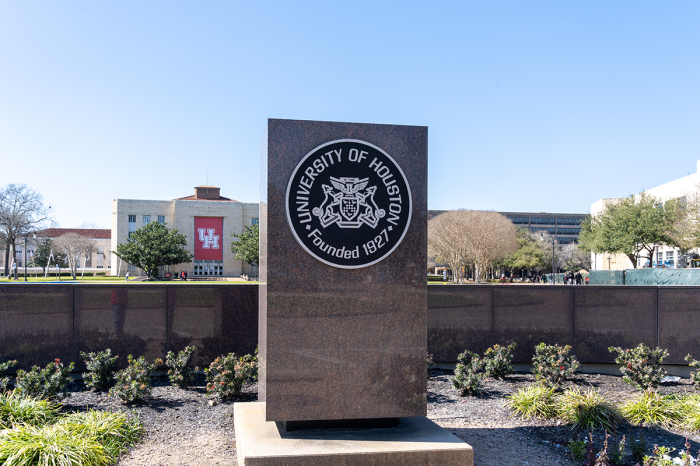Pro-life group urges Texas university to cancel 'satanic' statue display

A pro-life group is calling on a Texas university to cancel its plans to put up a statue it deems “satanic” and an “idol” to abortion.
The pro-life organization Texas Right to Life unveiled a petition last week asking the University of Houston to “keep the satanic abortion idol out of Texas.” The petition comes as the school’s Public Art Program is set to display an 18-foot-tall statue called “Witness” in the Cullen Family Plaza from Feb. 28 through the end of October.
Texas Right to Life has denounced “Witness” as a “golden statue with satanic imagery to honor abortion and memorialize the late Supreme Court Justice Ruth Bader Ginsburg.” It also described the statue as an “18-foot-tall naked female figure with braids shaped like goat horns and arms like tentacles.”
Shahzia Sikander, the artist behind “Witness,” elaborated on the motivation behind the sculpture in a statement published last year as her exhibit featuring the statue generated similar pushback after it was displayed in New York City.
“The recent focus on reproductive rights in the United States after the Supreme Court overturned the landmark 1973 decision of Roe v. Wade, which guaranteed the ... right to abortion, comes to the forefront,” she said. “In the process, is the dismissal, too, of the indefatigable spirit of women who have been collectively fighting for their right to their own bodies over generations.”
Asserting that “the enduring power lies with the people who step into and remain in the fight for equality,” Sikander insisted that “that spirit and grit is what I want to capture in” the statue. She acknowledged that “the luminous figure” at the center of the statue “is a nod to Ruth Bader Ginsburg, as seen in the detail adorning her collar,” adding that “with Ginsburg’s death and the reversal of Roe, there was a setback to women’s constitutional progress.”
Sikander’s comments about Ginsburg reflect the fact that the late Supreme Court Justice consistently took the pro-abortion position when ruling on cases during her nearly three decades on the bench. Following her death, former President Donald Trump appointed Amy Coney Barrett to fill her seat. Barrett voted to reverse Roe. Had Ginsburg remained on the court, she would have ruled the other way, and there wouldn't have been the votes necessary to overturn the landmark decision.
In addition to the allusion to Ginsburg and the celebration of abortion, Texas Right to Life also expressed concerns about the title of the multimedia exhibit, “Havah.” The exhibit's name translates to “Eve” in Arabic and Hebrew.
The Texas Right to Life petition included some comments Sikander made in a New York Times interview, where she praised Eve as “the first law-breaker.” According to Texas Right to Life, “Disobedience to God certainly should not be esteemed by society, much less lauded with a statue. On the contrary, art should reflect truth, goodness, and beauty: three timeless values that reveal the nature of God. Art cannot have beauty without truth. Art cannot have truth without goodness.”
Proclaiming that “a statue honoring child sacrifice has no place in Texas,” Texas Right to Life signaled its intention to hold a peaceful protest at the University of Houston on Feb. 28, the day the exhibit is scheduled to open.
For its part, the University of Houston is defending its decision to display the statue.
“Displaying a temporary work from an artist is never meant to be a celebration of the artist or his/her work but to simply provide a platform for artistic expression that encourages critical reflection and exploration of important issues,” the university said in a statement. “A part of student education is to understand that art can evoke diverse interpretations and emotions and that we must find ways to engage in constructive dialogue.”
In a fact sheet about the privately funded exhibit, the University of Houston details additional elements of symbolism within the statue: “The allegorical female form’s arms and legs resemble intertwined tree roots. According to the artist, the form is self-rooted and ‘can carry its roots wherever it goes,’ making it able to have roots across cultures, places and times. It also explores issues of being part of a diaspora, having to move around from place to place and how that can affect one’s identity.”
“The sculpture has braids shaped like ram horns, representing the unification of disparate strands. Ram horns have significance in Judaism, Christianity, and Islam as well as Central and South Asian beliefs, often associated with power and valor. The artist has said the braids link to one of her paintings that represents the courage, fluidity and resilience of the feminine,” the fact sheet added.
The school also noted that “the lines on the skirt” symbolize “the longitude and latitude lines on a globe, demonstrating the figure’s power in the world and relationship to numerous peoples” while “the mosaic glass skirt represents the glass ceiling that the feminine form can break through as well as the multiple linguistic relationships at the core of human language.”
Ryan Foley is a reporter for The Christian Post. He can be reached at: ryan.foley@christianpost.com





























